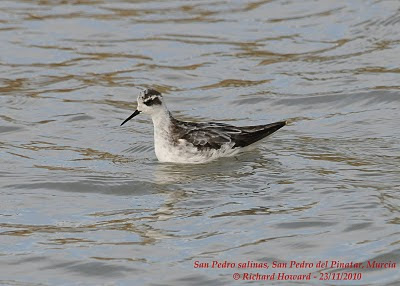Rarest birds of the year 2010 in Spain
Spain has experienced a very good year for rarities in 2010. Within the amount of observations gathered in Rare Birds in Spain recent report pages, we've selected 22 of those, with The rarest of the rare: an overview of 2010 rare bird highlights in Spain in the website > And vote in the poll useful for this blog entry and the webpage in this blog right column! CANDIDATE 1 Branta hutchinsii at Badajoz, January 2010 Photo above:© Antonio Ceballos. 2.1.2010 CANDIDATE 2 Bucephala albeola at Cantabria, January - March 2010 Photo above:© Luis Eduardo Molina. 7.1.2010 CANDIDATE 3 Megaceryle alcyon at Murcia, relocated on January 2010 and present until March 2010 Photo above:© Kris de Rouck 17.1.2010 CANDIDATE 4 Falco rusticolus at Asturies, February 2010 Photo above:© Juan Sagardia. February 2010 CANDIDATE 5 Larus smithsonianus at Madrid on February - May 2010 Photo above:© Delfín González. 7.2.2010 CANDIDATE 6 Motacilla flava feldegg '

